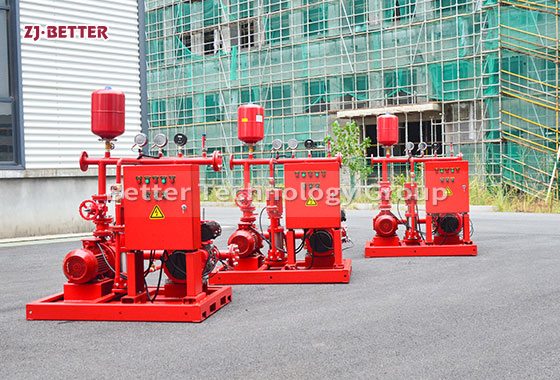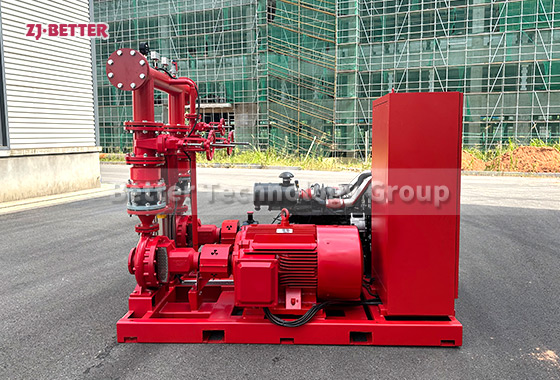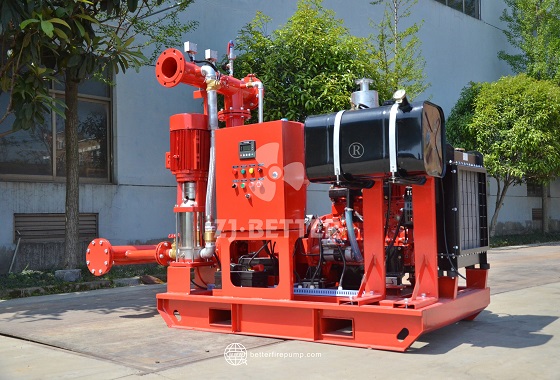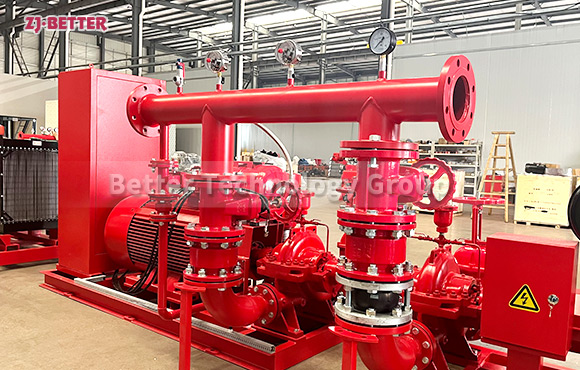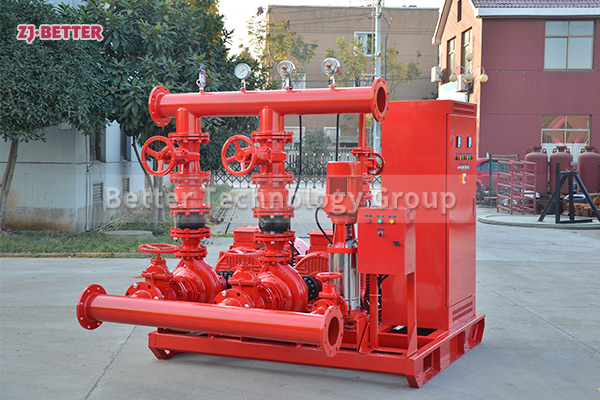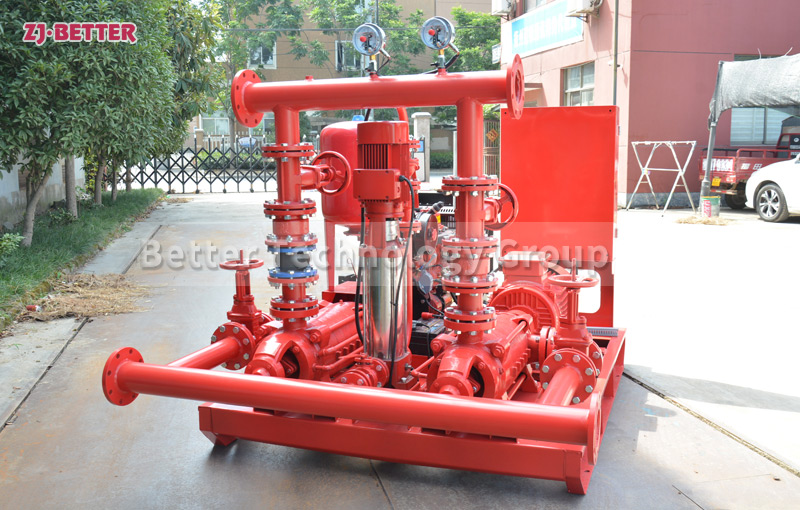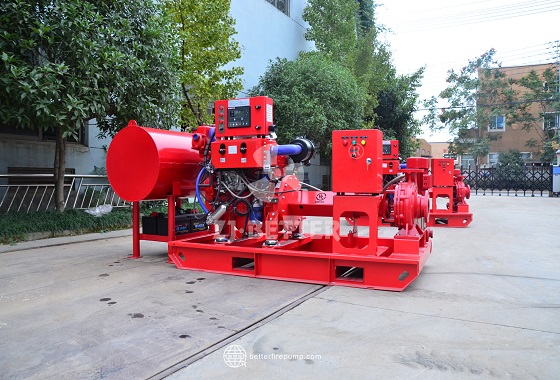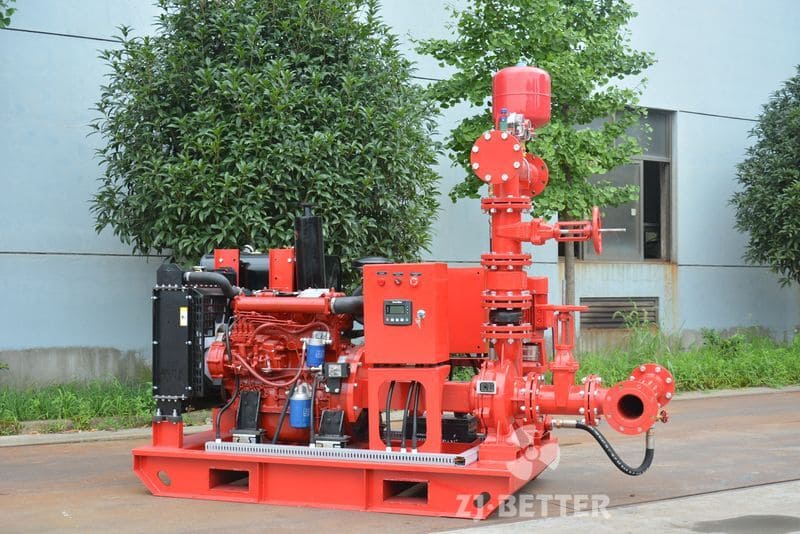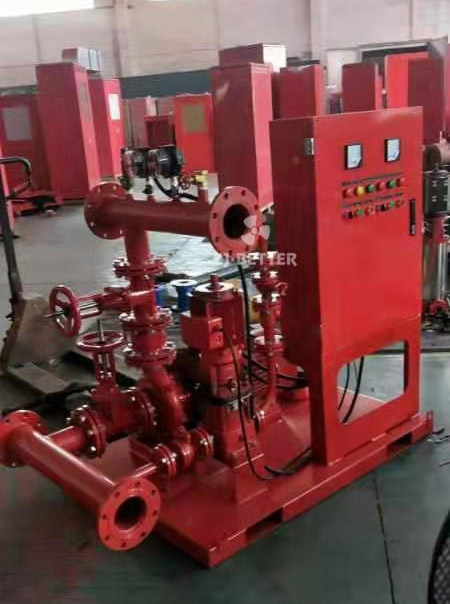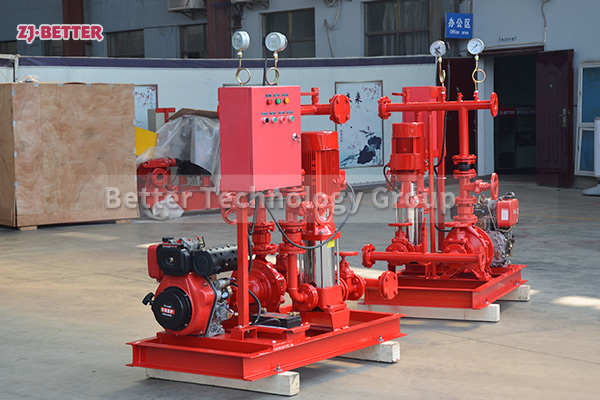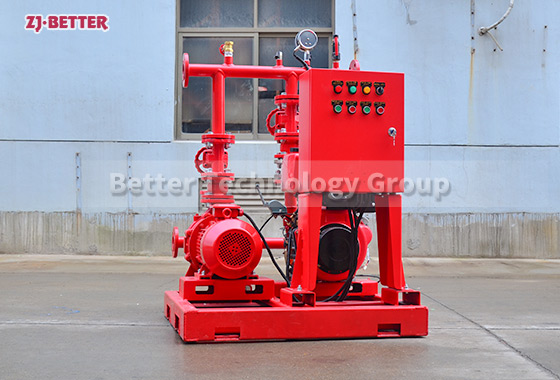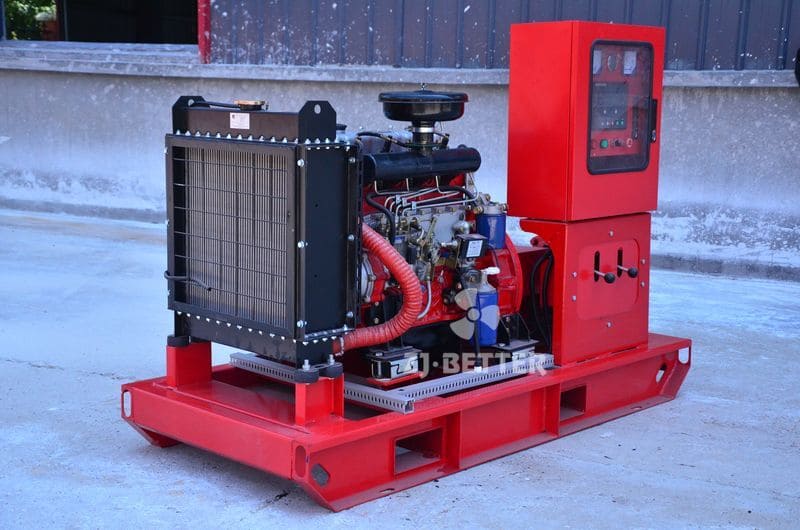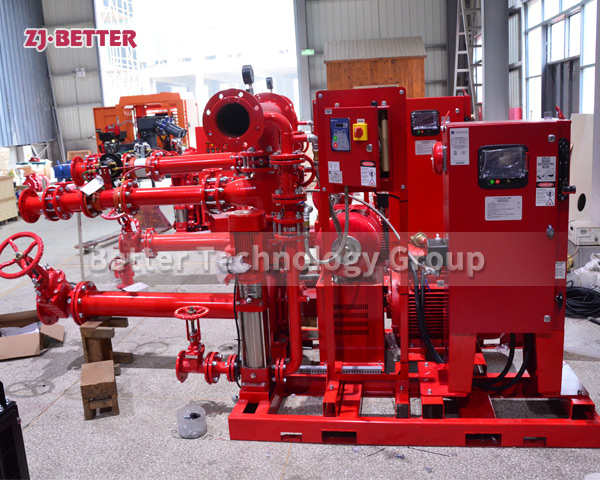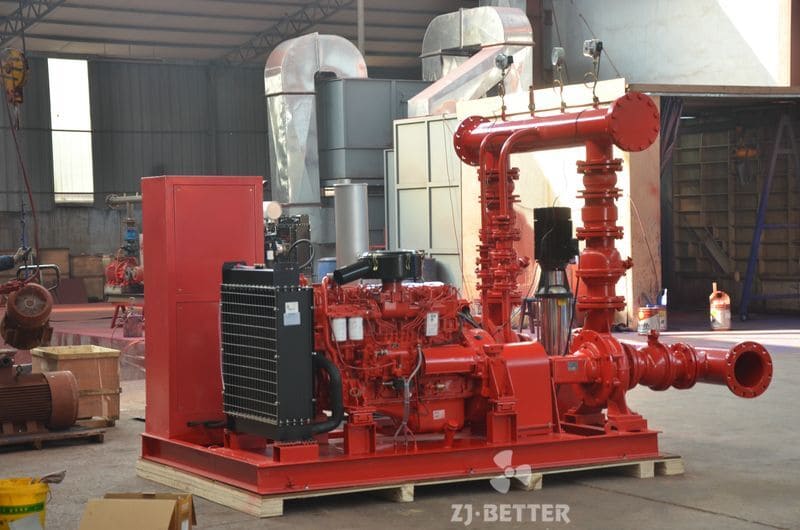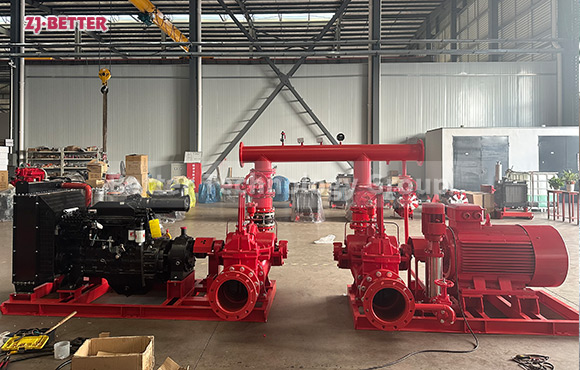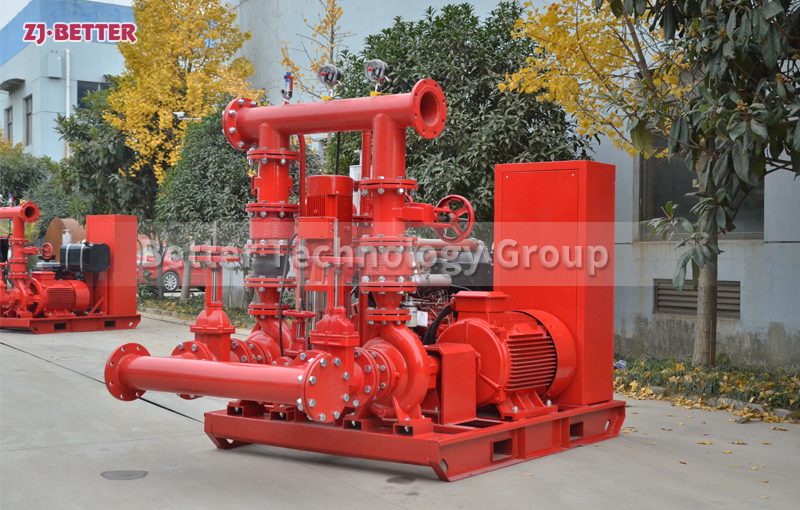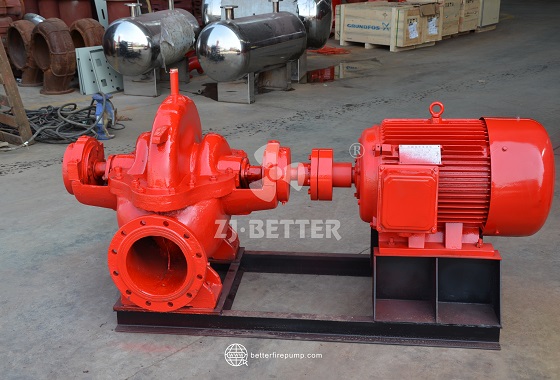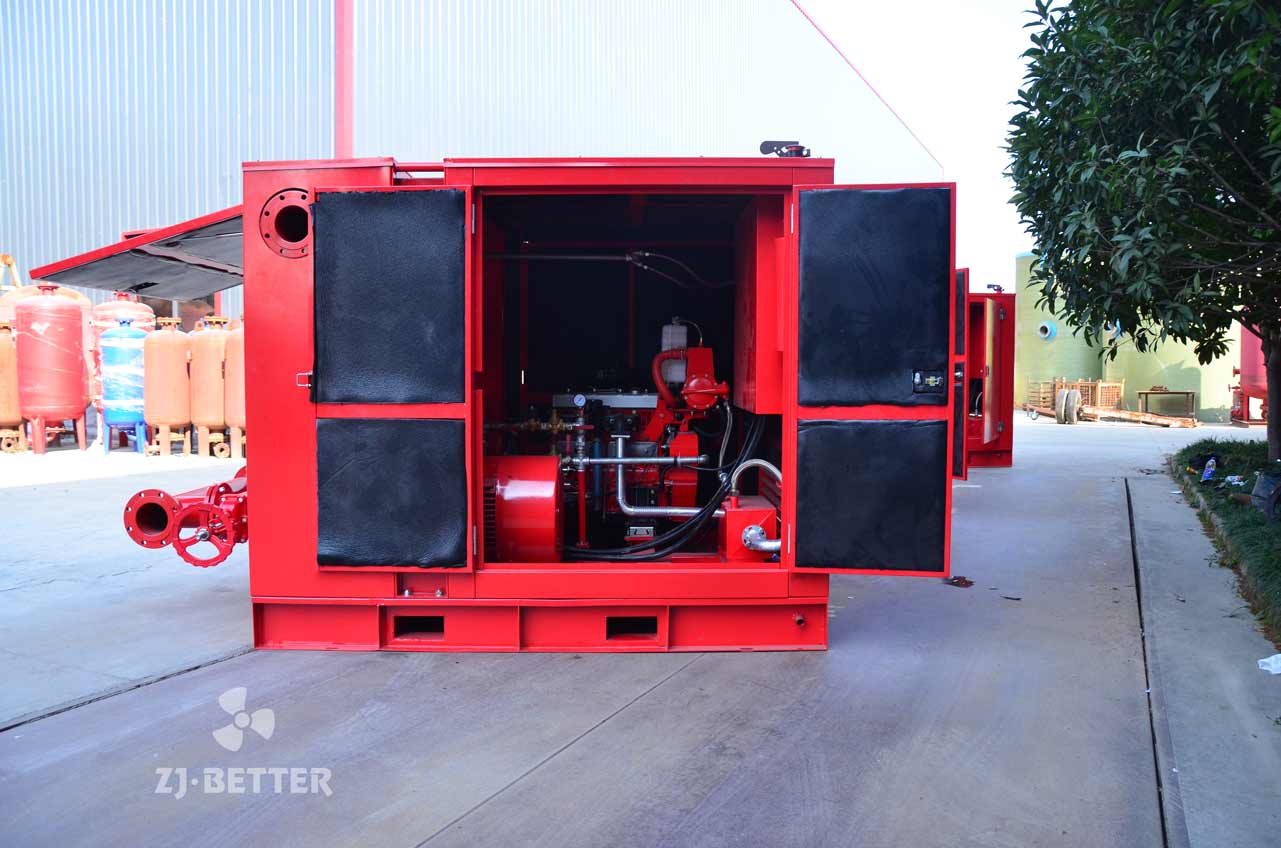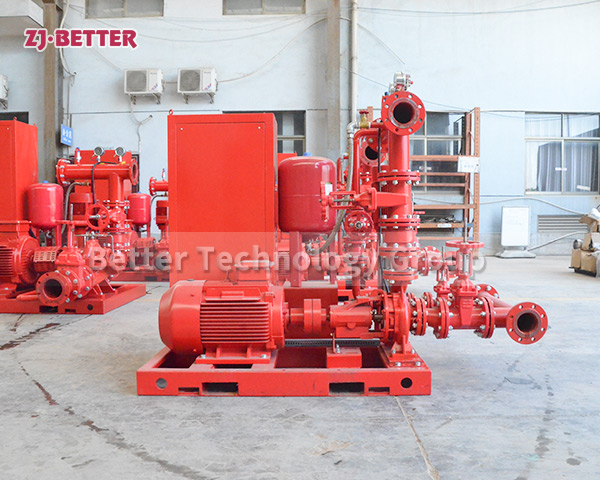Jockey Pump and Main Pump Coordination: The Key to Faster Fire System Response
Discover the essential role of jockey pumps in fire protection systems. Learn how they maintain system pressure, extend main pump lifespan, and improve emergency response performance while ensuring compliance with international fire safety standards.
Jockey pumps, often referred to as pressure maintenance pumps or pressure-sustaining pumps, play an essential yet often underestimated role in fire protection systems. While the main fire pump is responsible for delivering large volumes of water during emergency situations, the jockey pump ensures that the system pressure remains stable at all times when there is no fire. This vital functionality allows the entire fire protection system to stay on alert without unnecessary wear and tear on the main pump. The coordination between the jockey pump and the main pump is therefore not just a matter of convenience—it is a key aspect of system reliability, longevity, and operational readiness. One of the major advantages of integrating a jockey pump into a fire pump system is the reduction in the frequency of the main pump’s activation. In fire protection systems, even small leaks or minor drops in pressure caused by system testing, temperature fluctuations, or routine maintenance activities can trigger pressure drops. Without a jockey pump, such pressure drops would result in the main pump cycling on and off repeatedly, leading to premature wear, increased energy consumption, and maintenance costs. The jockey pump, typically much smaller and more energy-efficient than the main fire pump, takes on the task of restoring pressure when these minor drops occur. This minimizes unnecessary operation of the main pump and keeps the system in a constant state of readiness. Furthermore, jockey pumps contribute significantly to extending the operational lifespan of the main fire pump. By preventing short cycling—frequent starts and stops—the jockey pump protects the main pump from the damaging effects of mechanical stress and overheating. This, in turn, reduces the need for expensive repairs and replacements, translating into lower long-term costs for facility managers and building owners. In systems without a jockey pump, the main pump is exposed to frequent mechanical stress that can lead to seal damage, bearing failure, or motor burnout. With the presence of a jockey pump, such risks are greatly mitigated. Another critical benefit of using a jockey pump in conjunction with a main pump is the enhanced response time in emergency situations. Because the system is maintained at a constant pressure, the main pump does not need to overcome a pressure deficit before reaching its operating parameters. Instead, it can immediately deliver water at the required flow and pressure, ensuring rapid and effective fire suppression from the moment it activates. This fast response time can make a significant difference in controlling fire spread, minimizing damage, and potentially saving lives. The importance of a few seconds during a fire emergency cannot be overstated, and the jockey pump’s role in enabling an immediate response cannot be ignored. Jockey pumps are also advantageous from a control and automation standpoint. Modern fire protection systems are often equipped with intelligent controllers and monitoring units that coordinate the operation of all components, including the main pump and the jockey pump. The jockey pump’s ability to communicate with the control panel allows for automated pressure adjustments and real-time alerts in case of system irregularities. This level of automation ensures that maintenance personnel are kept informed of potential issues before they escalate, allowing for proactive servicing and reducing downtime. The feedback loop between the jockey pump and control panel enhances overall system reliability and safety. In terms of installation and compatibility, jockey pumps are available in a wide range of configurations to suit different types of fire protection systems, including wet pipe sprinkler systems, standpipe systems, and deluge systems. They can be electric motor-driven and are often installed alongside the main pump on a common skid for ease of maintenance and operation. Their compact size makes them easy to install in confined spaces, and their modular design allows for easy replacement or upgrading without major disruptions to the overall system. Many units come pre-wired and pre-tested from the factory, reducing installation time and ensuring dependable performance right out of the box. The energy efficiency of jockey pumps is another compelling advantage, particularly for facilities looking to reduce their operational costs. Because these pumps operate only when minor pressure drops occur and because their flow rate is relatively low, they consume significantly less electricity than the main fire pump. Over time, this leads to considerable energy savings, especially in large buildings or industrial complexes where the fire protection system must be kept pressurized 24/7. The lower energy demand also contributes to a smaller carbon footprint, supporting sustainability initiatives and compliance with green building standards. Additionally, jockey pumps are designed with durability in mind. They are often constructed with corrosion-resistant materials such as stainless steel or bronze, ensuring long service life even in demanding environments. Their internal components are engineered for precision and reliability, with features like high-quality seals, balanced impellers, and advanced bearings that minimize friction and wear. Routine maintenance is simple and straightforward, often requiring only periodic inspection and lubrication. These factors contribute to the jockey pump’s reputation as a low-maintenance, high-value component of any fire safety infrastructure. The coordination between the jockey pump and main fire pump also plays a vital role in compliance with international fire safety codes and standards. Leading regulatory bodies such as NFPA (National Fire Protection Association) and UL (Underwriters Laboratories) recognize the importance of pressure maintenance in fire protection systems and include provisions for jockey pumps in their guidelines. Using a properly sized and installed jockey pump ensures that systems meet these regulatory requirements, thereby avoiding compliance issues and ensuring the safety of occupants and property. Finally, it is worth noting that the integration of jockey pumps into fire protection systems represents a proactive approach to risk management. Fires are unpredictable, and any delay or malfunction in the response system can have devastating consequences. By maintaining constant system pressure and reducing the mechanical burden on the main pump, jockey pumps serve as silent guardians—always operating in the background, ensuring that everything is in place when the need arises. This invisible layer of protection gives building owners, safety engineers, and facility managers the confidence that their systems are operating optimally around the clock. In conclusion, the jockey pump is not just an accessory or optional component in a fire protection system; it is a strategic element that enhances performance, prolongs equipment life, reduces operational costs, and ensures rapid fire response. Its contribution to system stability, reliability, and compliance makes it an indispensable tool in modern fire safety engineering. Whether in commercial high-rises, manufacturing plants, or public infrastructure, the presence of a well-integrated jockey pump alongside the main fire pump represents best practice in safeguarding lives and property.



